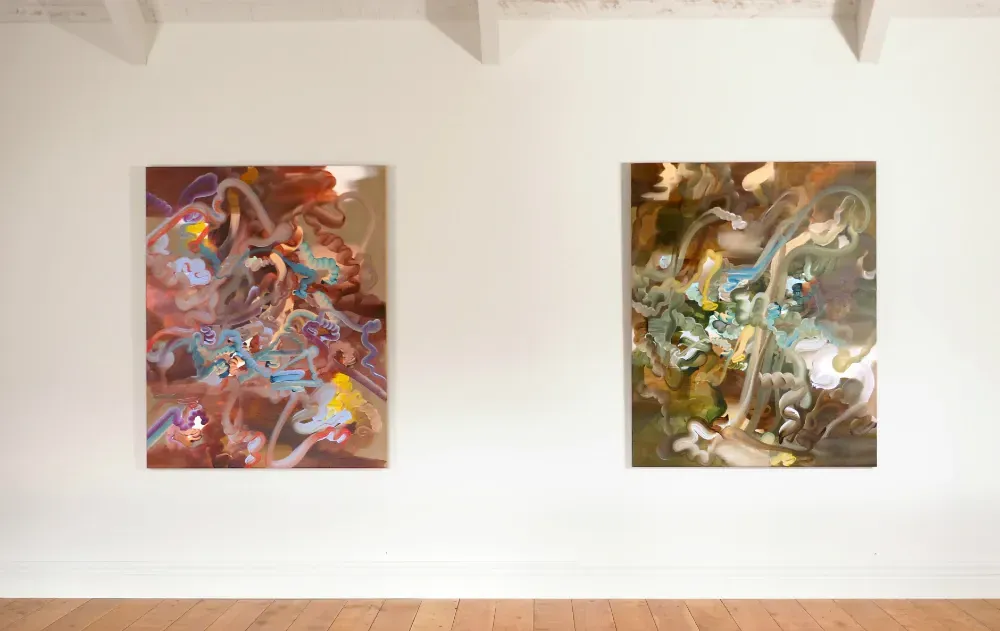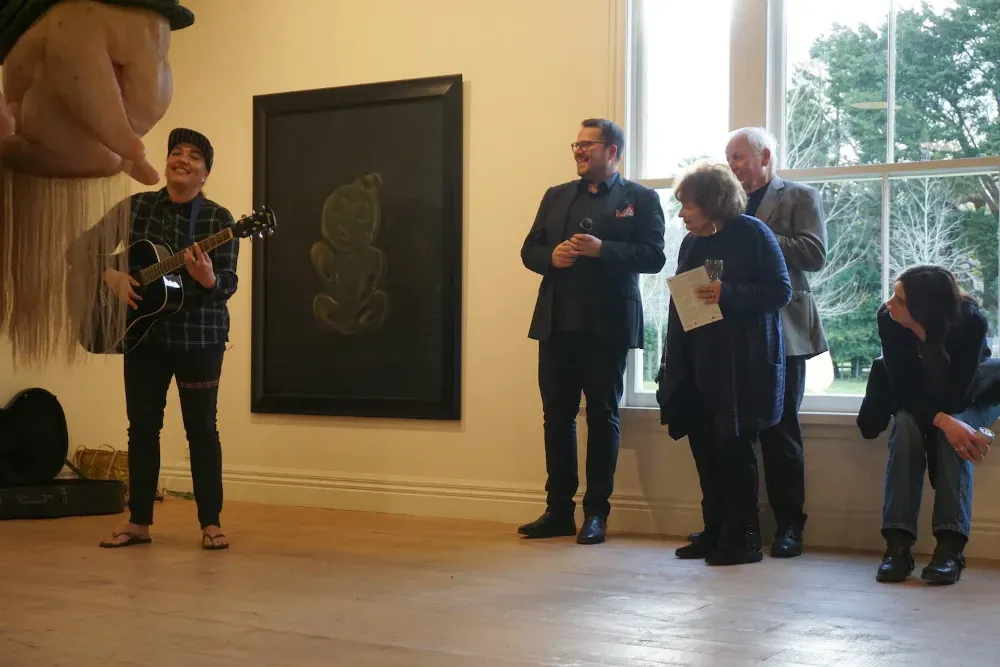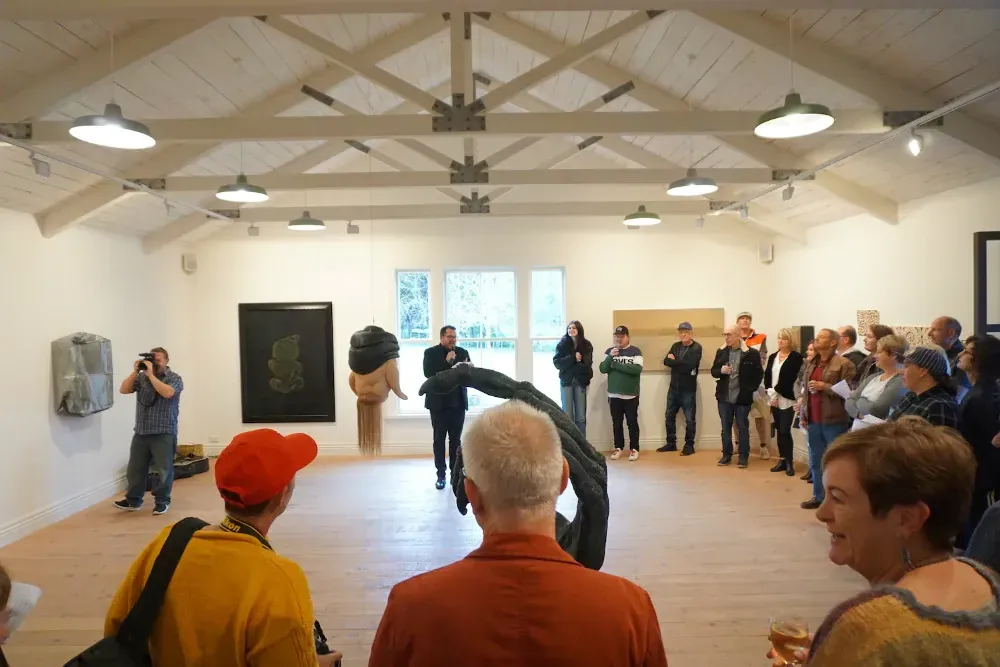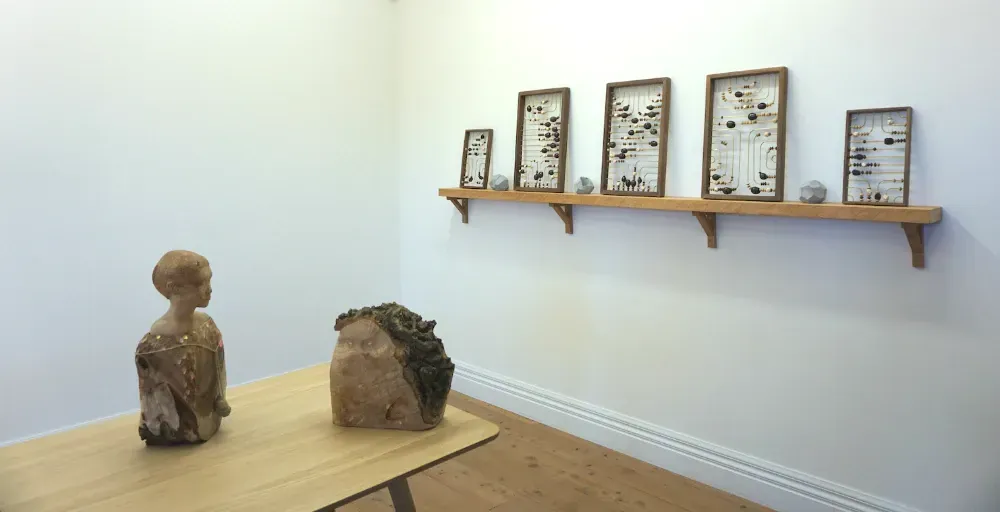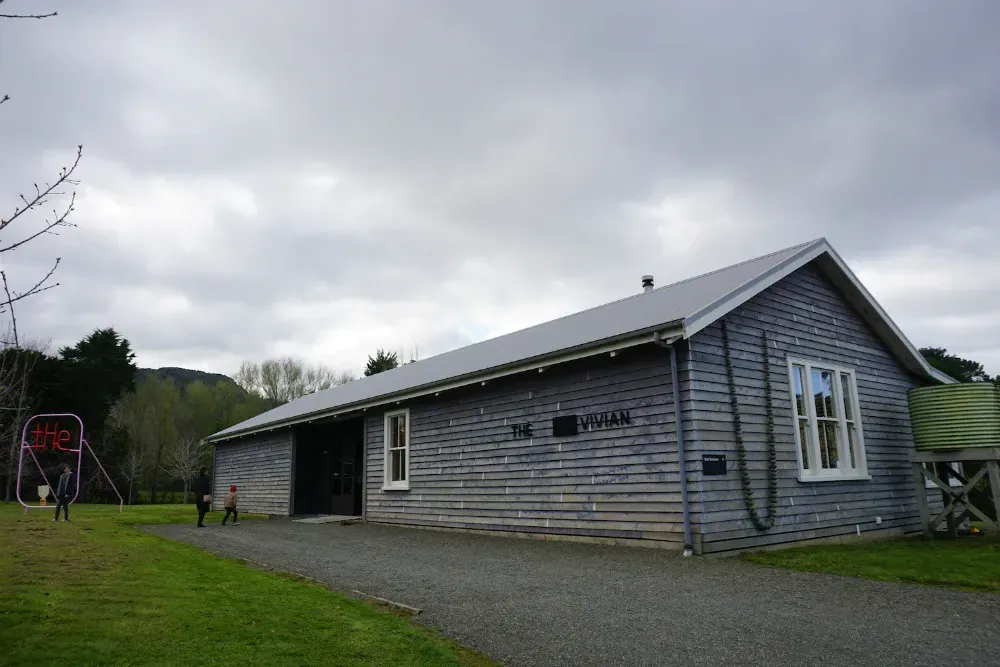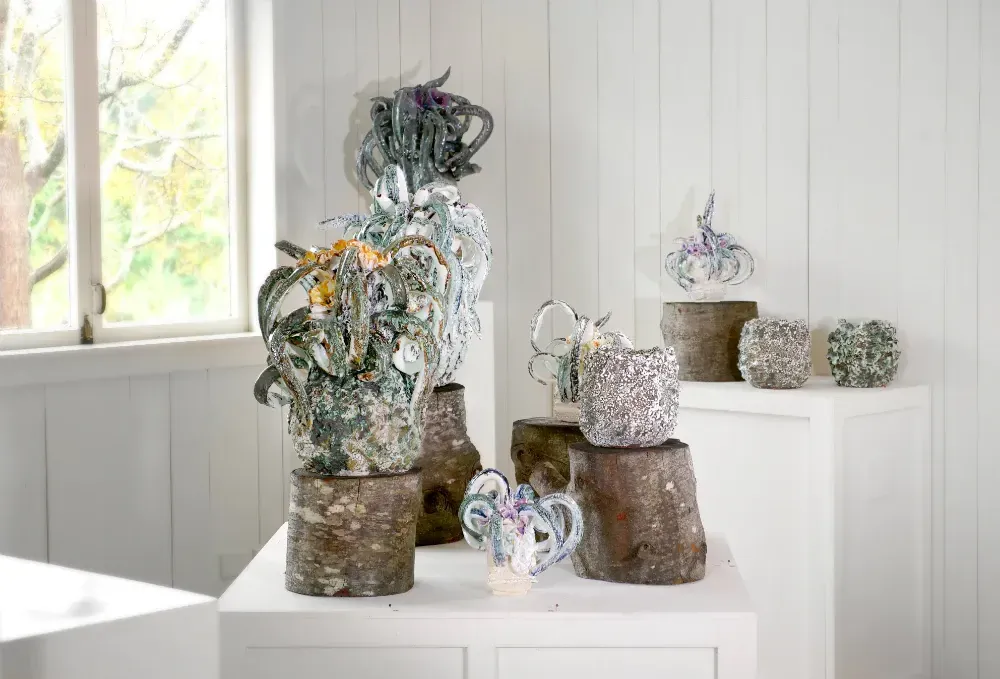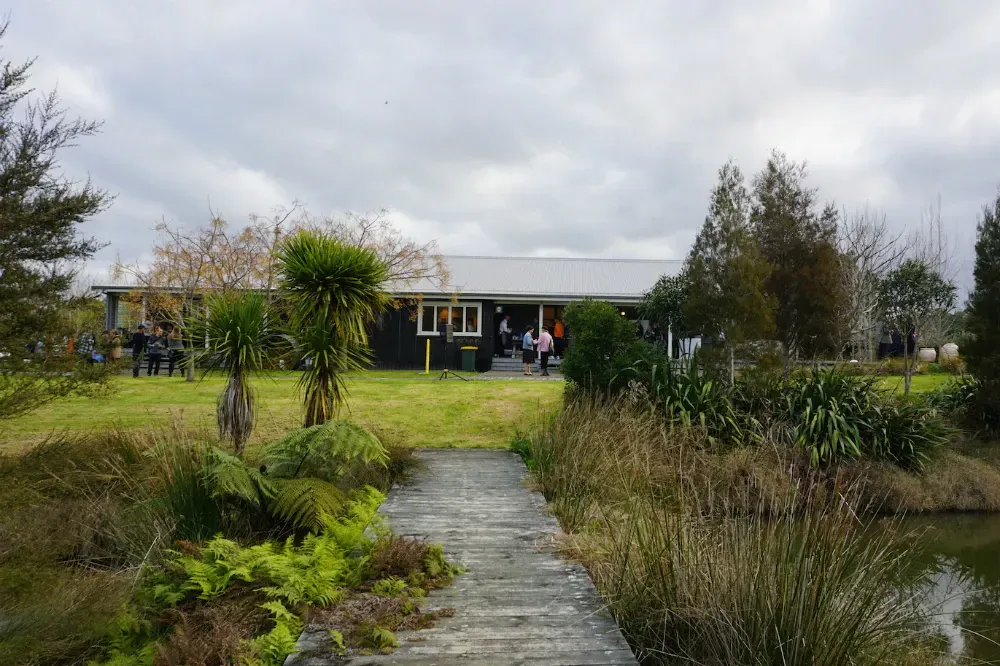Head North
Written by
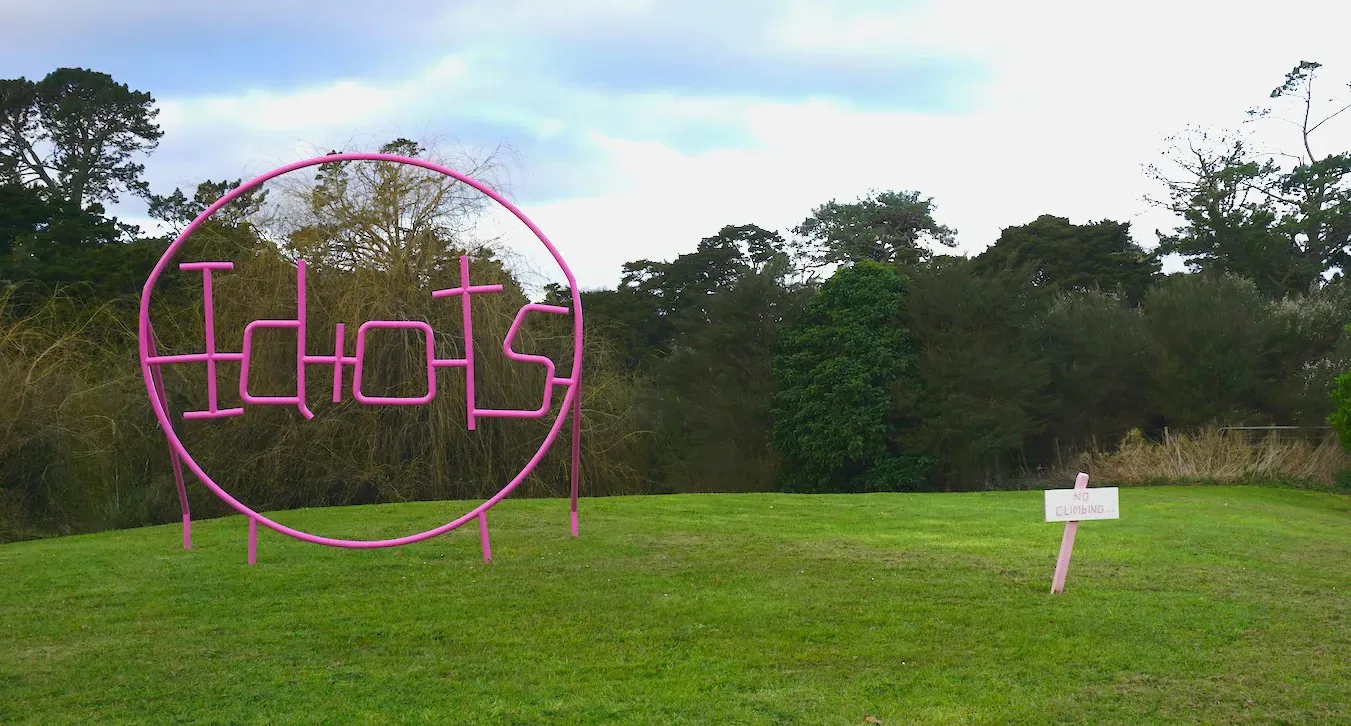
Matakana is only about an hour’s drive north of Auckland, but still feels like a bit of a world away, Once you leave the toll road behind you (does anyone else hold their breath for the length of the tunnel?), green takes over from the endless suburban sprawl and industrial shopping areas. The road winds and time seems to tick on just a teeny bit slower. Arriving at The Vivian feels like entering a true slice of heaven in its own right.
Looking for an answer
We arrived just in time for the opening celebration of ‘Still No Answer’, an exhibition of contemporary women artists from New Zealand and Australia, which combines high calibre names like sculptor Patricia Piccinni, the late Aboriginal painter Sally Gabori and Aotearoa’s highly regarded photographer Fiona Pardington MNZM with local stars like the three Gossage sisters and the emerging abstract painter Grace Wright (who went on to win a national art award only two days later).

Work by Grace Wright at The Vivian Gallery, Matakana. Image: Supplied.
The purpose-built gallery building with the surrounding sprawling grounds scattered in sculptures by Iain Cheesman, Wanda Gillespie and others nods to the farm and wine country surrounding Matakana, enclosed only by the beautiful east coast beaches like Pakiri and Tawharanui Regional Park.
The sunlit rooms host up to 3 exhibitions at a time, and this opening celebrated all 3 in equal measure (plus the works on display in the office area are another real treat to the eye): Wanda Gillespie’s dreamy carvings in ‘Higher Thinking’ in the East Gallery, the studio gallery with Andrew McDonald’s powerful ‘Declarations’ paintings, and ‘Still No Answer’, a response to the successful show ‘Never An Answer’, also an all-women’s show curated by Lucinda Bennett and Linda Tyler in 2018. To be honest, I could have stayed all weekend soaking it up.
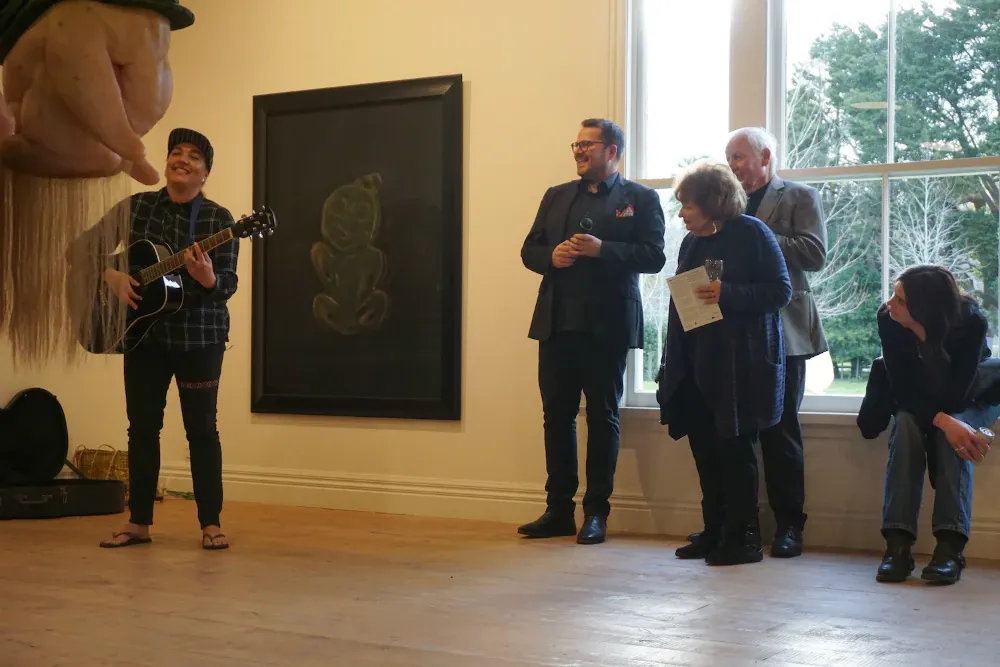
Ra Gossage performs at the opening of ‘Still No Answer’, in front of a work by Dr Fiona Pardington. Image: Annie Pokel
He tangata, he tangata, he tangata
It is not just the dreamy location and the beautiful building filled with an impressive and diverse line-up of art works that makes this gallery such a destination: we were greeted by a warm sense of community, people of all ages, locals and big-city dwellers alike wandered the grounds and gallery rooms, and director Scott and his team made sure to have a welcoming smile and chat with everyone coming through their door. There’s a lot of truth in the proverb that it is all about the people. We were introduced to the show, the artists, the other galleries that helped support the exhibition as well as the sponsor.
At the event, Scott presented the audience with a speech that very much summed up his philosophy for running The Vivian. With a business model focussed on collaboration, this gallery is very much a hybrid of public and private enterprise. The Vivian collaborates with other dealer galleries in Aotearoa and on the international stage, which enables them to show a much greater variety of artists than those officially represented by the gallery. “First this happened by necessity, now it is by choice.”
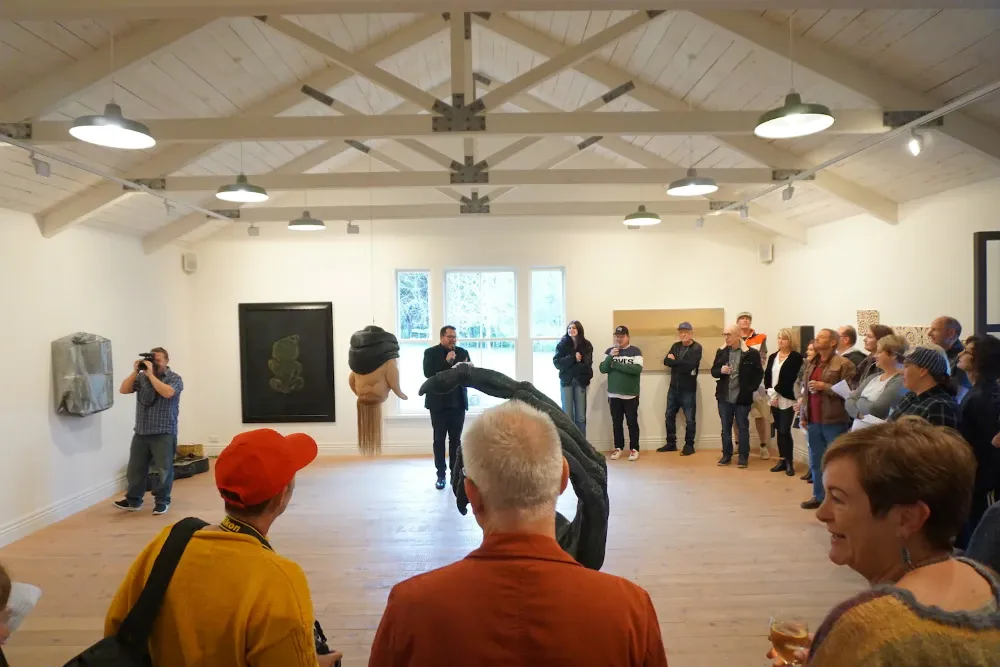
Director Scott Lawrie speaks at the opening of ‘Still No Answer’.
Collaboration over competition
New Zealand’s arts community remains a small one, and these collaborations are all about the relationship between the galleries while keeping the artists’ best interests at heart: an emerging artist may not be able to sign with a long-standing Auckland gallery like Gow Langsford right away, but will be part of the wider gallery whanau thanks to The Vivian team. From a business perspective, this is not a management strategy focused on profit: if a work by an artist represented by another gallery sells at The Vivian, that gallery receives the main cut of the gallery commission. The clear advantage of course lies in the increased exposure for both the artist and the gallery, as well as the ability to build valuable relationships beyond the sales strategy.
A brave approach, and one that challenges the norm for sure. With no regulated code of conduct or official set of rules, most would assume that approaching another gallery with the idea of exhibiting “their” artist (the concept of ownership may not be openly displayed, but is definitely one to be mindful of on the gallery landscape) would be met with irritation or downright refusal. And yet, it is working well for The Vivian and its partnering galleries. The relationship building does not stop with the other dealers: Scott points out how lucky they are to have the strong support of local brewery Sawmill Brewery down the road for their events, and artists like Iain Cheesman who also contribute their technical expertise to the exhibitions’ success.
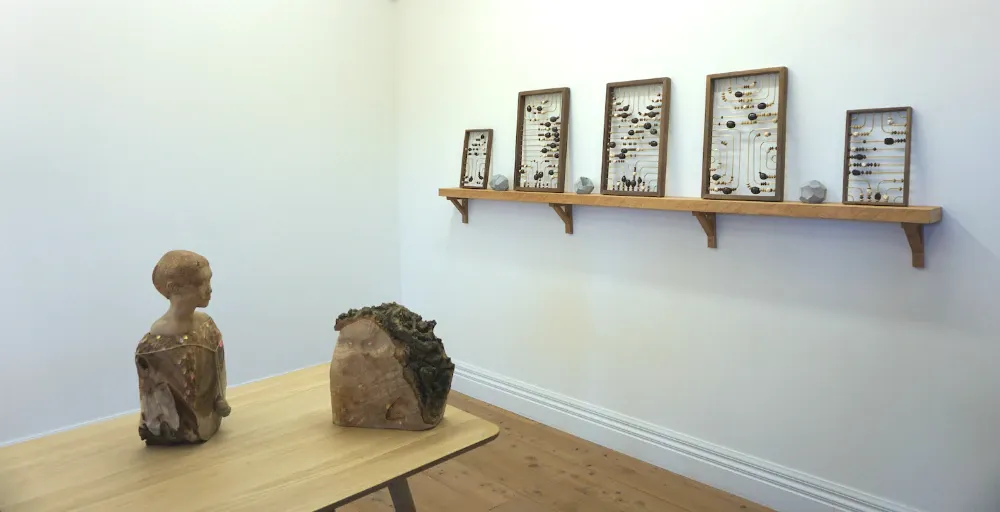
Installation view of Wanda Gillespie’s ‘Higher Thinking’. Image: Annie Pokel
Where the hell is Matakana?
Extending the network further afield, The Vivian attended both the Auckland Art Fair and the Spring1883 art fair in Sydney this year. And on both occasions, being a gallery from a small rural place surprisingly played out to be an advantage: Scott insisted on having ‘Matakana’ put down as the gallery’s location (rather than the more obvious Auckland), and this proved to be “a terrific engagement thing (...) so many people came into the space, wanting to know ‘Where the hell is Matakana?!’”.
Scott says that bringing Patricia Piccinni to the gallery was another definite aha-moment: having an artist of her international standing come visit the space and being so impressed with Scott’s vision that she decided to sign with The Vivian, was a clear sign that this approach to running an international gallery in rural New Zealand was one destined to good things. The sale of her globally significant work ‘Sphinx’, shown in Scott’s first show at The Vivian, ‘Exodus’, made this even more apparent.
They may be far away from the large audience of a major city in Matakana (“we feel like the moon to Auckland’s planet”), but this also allows them the freedom to do what they want, how they want to do it, with the right people.
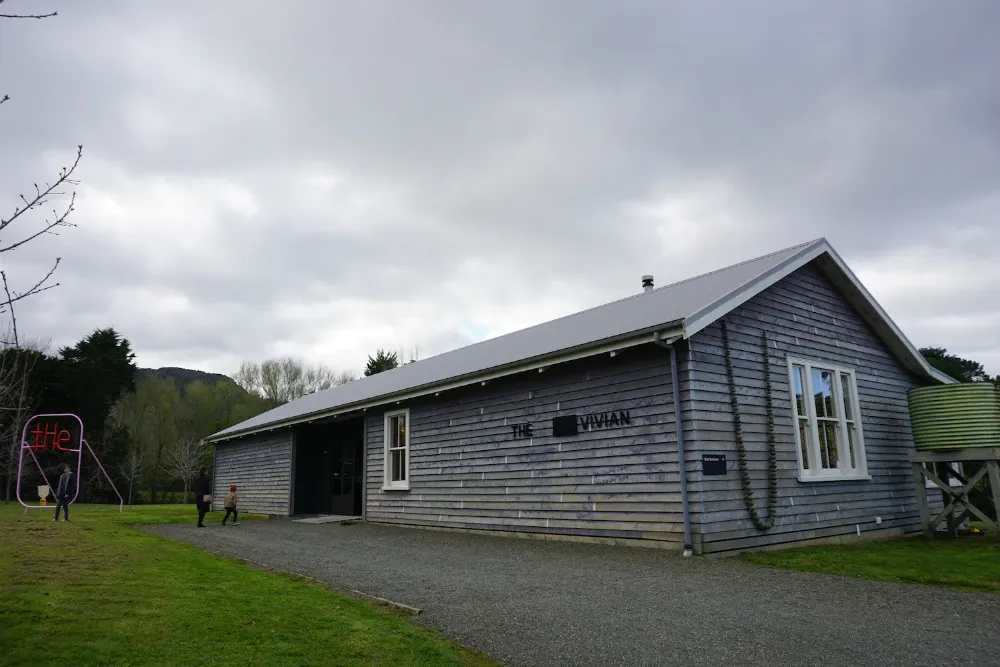
The Vivian Gallery, Matakana.
Igniting inspiration through story telling
In addition to the engaging line-up of shows and community-focused events, it's clear that Scott knows about using story telling to build the gallery's brand and reputation. The Vivian puts an enormous effort into educating and engaging their audience by using the most innovative channels. Part of The Vivian's package is an impressive YouTube channel filled with high-quality films of artist talks, to which the team recently added a podcast series. Both outlets challenge traditional ways of accessing and learning about art.
“Art needs the story behind it told,” says Scott on audience engagement. I was reminded that engagement is that mighty feat which most in the GLAM (galleries, libraries, archives, museums) sector struggle with improving on. The curly questions of how to to build audiences, get people through the door, sell products, and remain relevant to those we have reached?
“Art is such a powerful inspiration for life,” says Scott. “Art allows us to look at things through somebody else’s eyes, to look at them objectively and subjectively. Art allows us to pick and choose.” He quotes the American painter Laura Owens who when asked why she chose to pursue art said, “because in art, there is always a question, never an answer”.
“Our rule is to connect hearts and minds,” explains Scott. “We want an emotional response as well as to connect the mind. We want to explain to our audience why this work is so important at this time in the world.”
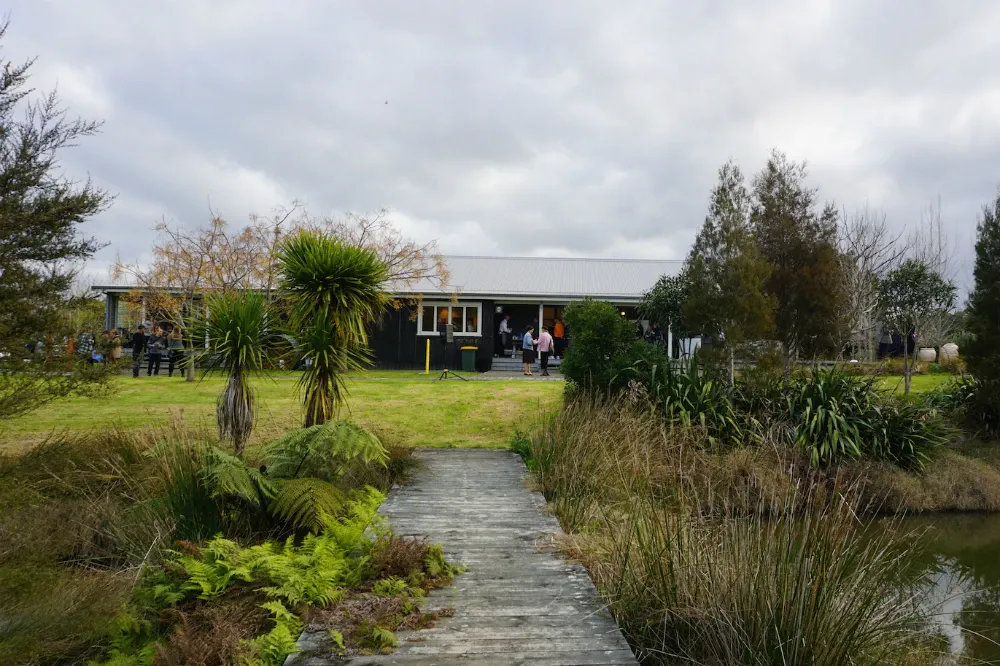
The Vivian, viewed from the garden. Image: Annie Pokel
Our 'Art Off the Beaten Track' column helps you find galleries in hidden places. If you find a gem off the beaten track, let us know so we can spread the word: email editor@thebigidea.co.nz.
